May 22, 2025 | 11:14 GMT +7
May 22, 2025 | 11:14 GMT +7
Hotline: 0913.378.918
May 22, 2025 | 11:14 GMT +7
Hotline: 0913.378.918
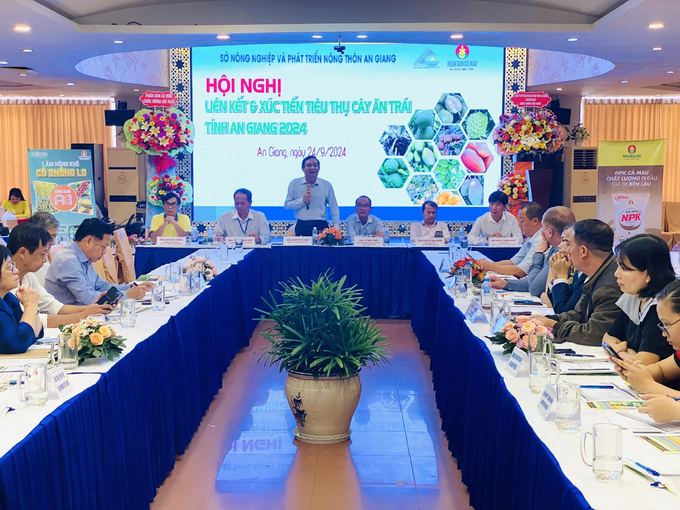
Conference "Linking and Promoting Fruit Trees in An Giang Province 2024". Photo: Le Hoang Vu.
On September 24, the People's Committee of An Giang province coordinated with the Department of Agriculture and Rural Development of An Giang to organize the Conference "Linking and Promoting, Consuming Fruit Trees in An Giang Province 2024". This is an opportunity to assess the potential, advantages, and current production status and development orientation of the fruit tree sector in An Giang province from 2021 to 2025, with a vision for 2030. At the same time, it also creates opportunities for businesses, cooperatives, and cooperative groups to link from supplying quality input materials to organizing production and consumption according to the value chain.
Nguyen Thi Minh Thuy, Vice Chairman of the People's Committee of An Giang province, said: The area of fruit trees in An Giang province is about 20,000 hectares, with a total annual output estimated at more than 350,000 tons and has been granted 446 export growing area codes by the Ministry of Agriculture and Rural Development. Of which, the main ones include: more than 225,000 tons of mango, 14,000 tons of banana, 2,500 tons of longan, 11,000 tons of citrus, 3,600 tons of durian and 22,500 tons of jackfruit. The agricultural sector has supported the formation of many concentrated fruit growing areas, supported the issuance of 514 domestic growing area codes and exported to markets: the United States, New Zealand, Australia, Korea, China and many other countries. Initially, the fruit industry of An Giang province ensured sufficient raw materials in terms of quantity and quality for businesses supplying domestic and foreign markets.

According to Nguyen Thi Minh Thuy, Vice Chairwoman of An Giang Provincial People's Committee, the area of fruit trees in An Giang is about 20,000 hectares, with a total annual output of more than 350,000 tons and the Ministry of Agriculture and Rural Development has granted 446 export growing area codes. Photo: Le Hoang Vu.
According to Thuy, continue to innovate and develop forms of production organization, taking cooperatives and cooperatives as the core to organize production, linking with enterprises according to the value chain, and contributing to increasing the value of fruit trees in the province. Promote the formation of links between farmers and farmers to establish production groups such as cooperatives, cooperative groups... thereby creating strengths for producing and consuming fruit trees and limiting risks in the fruit consumption stage in localities.
Implement policies to encourage and support the sustainable development of fruit trees according to the safe production model VietGAP, GlobalGAP. Expand the certification scale according to GlobalGAP and VietGAP standards to trace the origin of products and register trademarks to improve competitiveness in the export market, especially towards the target plan of 50% of the fruit tree area being granted a growing area code from 2025 to 2030.
Focus on attracting businesses interested in investing in developing fruit tree raw material areas, linking consumption with farmers, and investing in building fruit processing factories to increase the value of products. Mr. Nguyen Minh Hien, Director of GAP Cu Lao Gieng Cooperative in Cho Moi district, which has just exported 20 tons of mangoes to markets around the world, excitedly said that in recent years, with the attention and direction of the province, the active participation of the locality and the consensus and change in people's thinking about collective economy, it has contributed to creating positive changes in agricultural production.

Currently, An Giang exports fruits to major markets such as the United States, New Zealand, Australia, South Korea, China, and many others. Photo: Le Hoang Vu.
Regarding the production chain, Cu Lao Gieng GAP Cooperative has partnered with more than 100 official members and linked with enterprises supplying input materials and consuming products with a total area of over 243 hectares, with a mango output of over 1,700 tons per year.
In addition, the Cooperative has also signed a contract to supply fresh mangoes for export to OCFAMRM Company, Hoang Phat Fruit Company Limited, Chanh Thu Fruit Import-Export Company Limited, T&T Group with a quantity of hundreds of tons per year.
Having been associated with many years of fruit consumption and export in An Giang, Privet Nicolas Marcel René, Executive Director of The Fruit Republic Can Tho One Member Co., Ltd., said: Currently, the Fruit Republic is closely cooperating with the Department of Agriculture and Rural Development of Tri Ton district and Chau Thanh district to grow seedless crops on more than 50 hectares according to GlobalGAP standards for export. The Fruit Republic plans to expand the linked area by more than 200 hectares from 2025 to 2027 to create a sizeable raw material area to serve export to many countries around the world.

An Giang has set a target of having 50% of fruit-growing areas assigned growing area codes by 2023. Photo: Le Hoang Vu.
According to Nguyen Van Muoi, Deputy General Secretary of the Vietnam Fruit and Vegetable Association, over the past years, fruit production has continuously grown in area and output, with statistics in 2023 showing a total area of 1,249,400 thousand hectares, producing about 14 million tons of fruit trees. In particular, besides China, the largest and most traditional market, many types of Vietnamese fruits have penetrated other large and demanding markets such as the US, Korea, Japan, EU... with an export value exceeding USD 100 million per market in 2023.
For An Giang province, the Vietnam Fruit and Vegetable Association recommends reorganizing production, forming concentrated key fruit production areas, and developing processing factories, storage warehouses and linking consumption markets. Prioritize the development of some fruit trees with advantages, good consumption markets, and processing capabilities, such as mango (12,300ha), jackfruit (2,400ha), and durian (850ha)... Research and build some models of new fruit tree varieties that the locality does not have to assess the feasibility of appropriate conversion. Implement a spread-out harvest of fruit trees to avoid concentrating on the primary season with large output that makes it challenging to consume, quickly develop safe production areas certified by VietGAP and GlobalGAP... and be granted growing area codes. Synchronously apply scientific and technological advances in production and product preservation.
Translated by Huong Giang
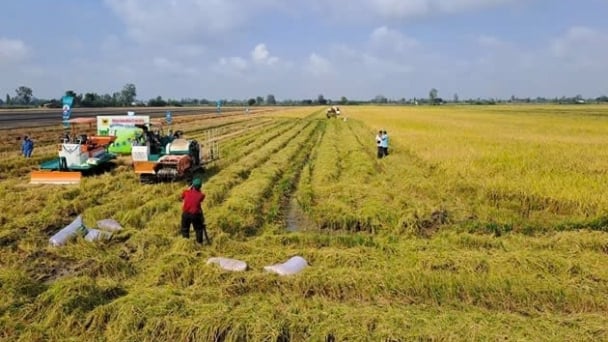
(VAN) To operate carbon market, one of the key issues is determining which types of 'commodities' meet the standards to be traded on the market.
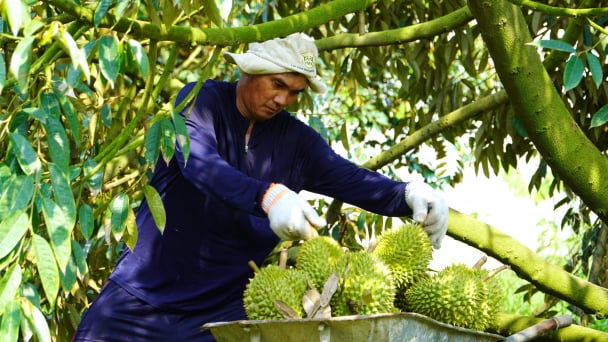
(VAN) Durian-producing localities need to coordinate more effectively with central authorities to improve the traceability, monitoring, and response systems in case of violations.
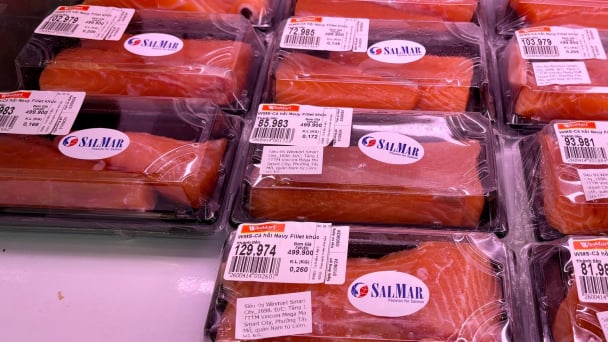
By minimizing waste, embracing modern technology, and expanding into niche markets, SalMar - the second largest producer of Atlantic salmon in the world has built a successful strategy to conquer the global market.
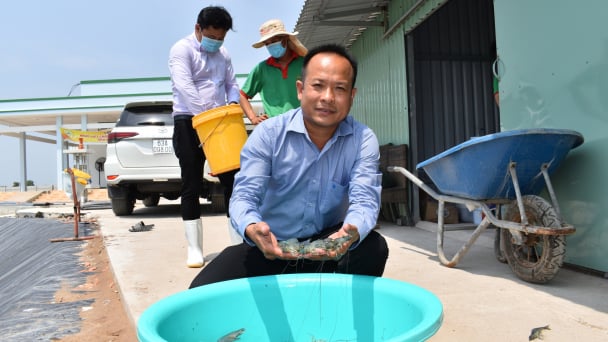
(VAN) One of the key factors for businesses to effectively take advantage of tariff preferences under these FTAs is the rules of origin.
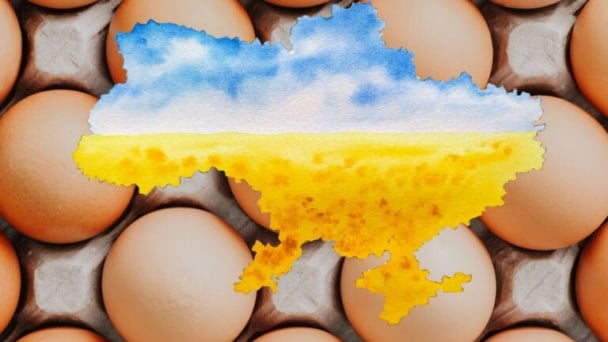
(VAN) Oliyar, a prominent Ukrainian oil and fat manufacturer, has revealed plans to build a farm for 2.3 million laying hens in the Lviv region. The additional production quantities promise to change the competitive landscape of the egg market of the Eastern Europe region.
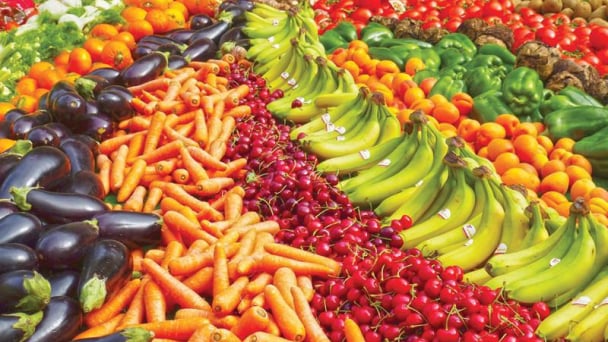
(VAN) On May 15, Ministry of Agriculture and Environment of Vietnam hosted the 'Connecting Vietnam - Germany agricultural, forestry and fishery trade' seminar in Berlin, Germany.

(VAN) In the face of counterfeit and imitation products, Khanh Hoa Salanganes Nest Company hopes for the prompt completion of the legal framework, strict enforcement against violations, and protection of the bird’s nest brand.